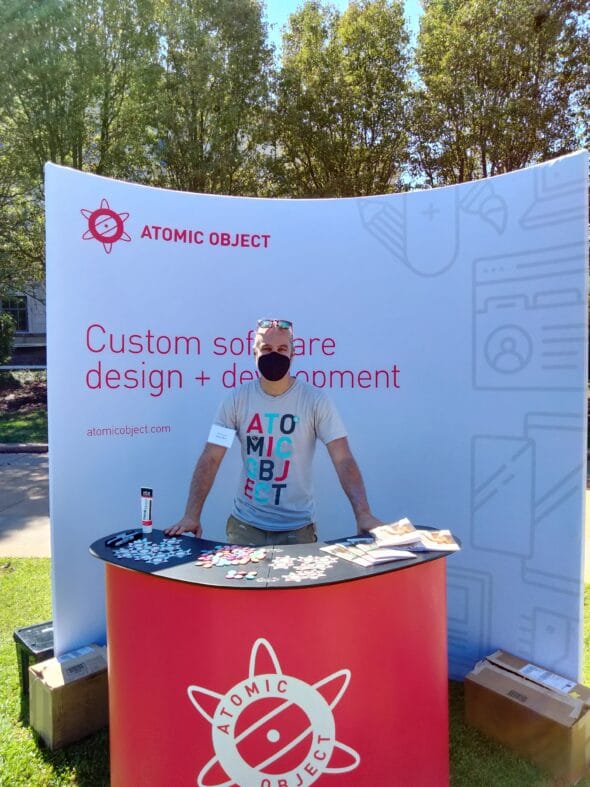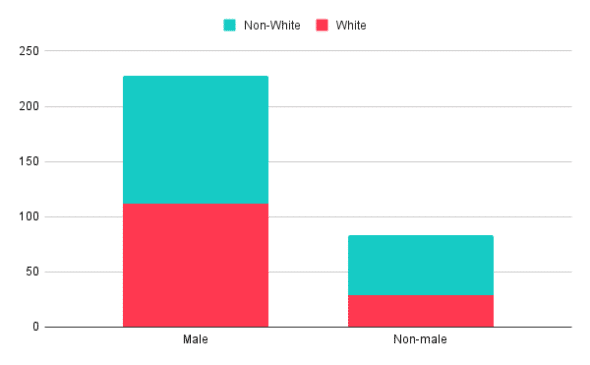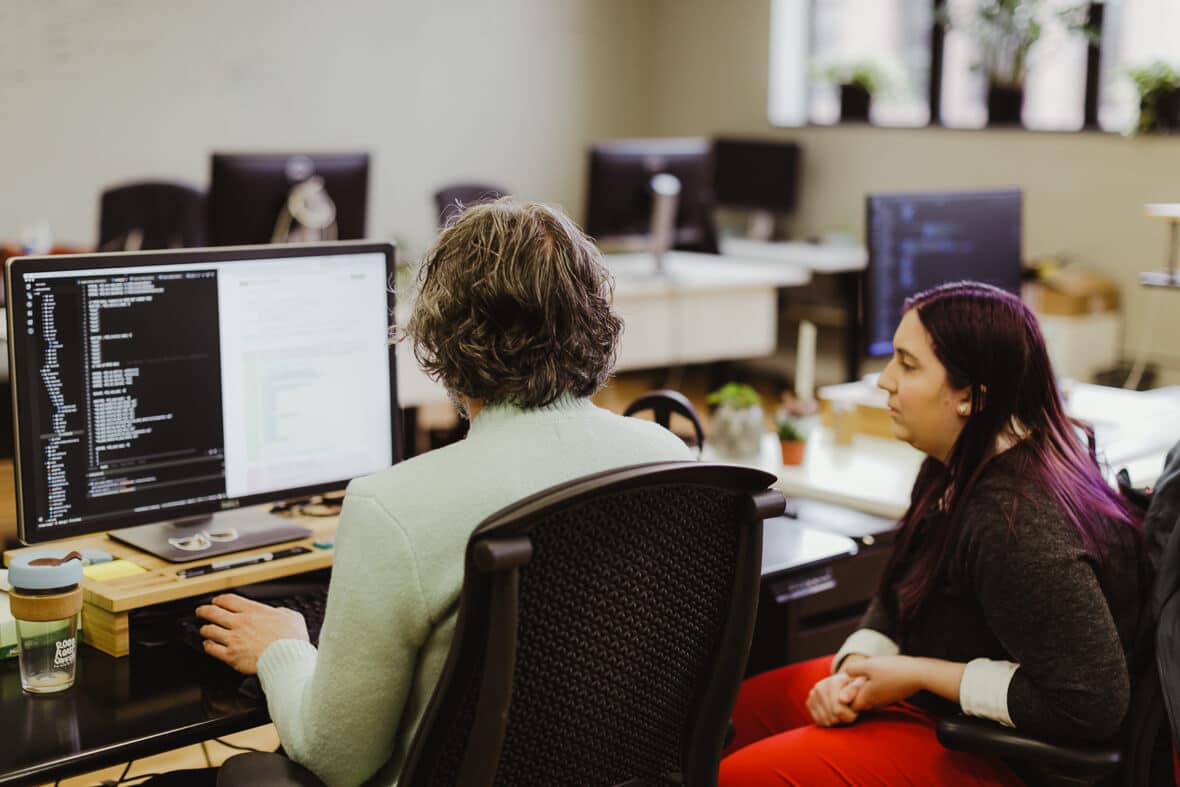Over the past few months, I spent the majority of my time working to recruit college students to the next Accelerator cohort for our Ann Arbor office. This was my third go-round recruiting since starting at Atomic Object. Each year so far has brought its own unique challenges. I’d like to share some insights and lessons from this recruiting season that I hope will be valuable in the years ahead, whatever they may bring.
Virtual career fairs are here to stay.
Many schools this year offered a hybrid recruiting approach, holding both in-person and virtual career fairs. I still find the virtual recruiting platforms like Handshake and InternX to be severely lacking compared to real face-to-face interactions, but they’re better than nothing. After a shaky 2020, it seems like both schools and students are more comfortable with those events.
The main difference between virtual and IRL career fairs is the structure of engagement. Virtual events have pre-planned schedules and time slots for you to meet with students one-on-one at equally apportioned times. Meatspace career fairs tend to be a free-for-all. Students stop by whichever booths catch their fancy. They can stay as long or as little as they like, maybe with or without other students crowding around.
There are advantages and disadvantages to both of these systems, but I think the most successful engagement we had this year was when the event combined both. I enjoyed the experience of quickly meeting and pitching dozens of students in person. Following that was a virtual career fair where the really interested students could sign up for additional one-on-one time. Pandemic or not, I’d like to see this kind of event coordination from schools continue in the future.

It’s worth noting that there’s nothing inherent to virtual or in-person events that requires them to be structured this way. An online job platform could design a queuing system where students can filter into video sessions much like a physical booth. I also went to an in-person career fair at Carnegie Mellon this year where they coordinated signups via the online platform to limit face-to-face interactions due to Covid-19 precautions.
I hope more schools and job platforms try to get creative in the years to come. They should find event formats that work for a diverse group of students and companies.
Representation of women in Computer Science is still a big problem.
One effort we made this year was to increase our recruiting efforts of BIPOC students. It’s a demographic that’s sorely underrepresented in the technology profession. We had a few approaches to this task, but the primary one was recruiting from more schools that have greater ethnic/racial representation in their student bodies. In total, we participated in recruiting events at 11 different colleges in 2021, including five we’d never recruited from before.
We collected very rough ethnic and gender demographics for all students we spoke directly with this year. While this data is far from perfect, it’s good enough to draw some basic conclusions about our efforts. The short story is that our recruiting put us in front of roughly equal numbers of white and non-white students.

However, we spoke with nearly three times as many male students as non-male students. This was despite participating in some recruiting events specifically focused on this demographic, such as the BIG 10 Women in Computing Career Fair. The latest research shows that women in STEM fields, and particularly software development, are still significantly underrepresented. Atomic Object has focused on our gender diversity for quite a while, but we still have a lot of room for progress there as well.
I’m happy with our recruiting efforts this year from a DEI perspective, but this work is a marathon, not a sprint. I hope to continue reporting data like this year over year and see these numbers move toward a better balance.
College graduates aren’t excited about remote work.
One common refrain from students during this recruiting season was how they valued and were seeking out job opportunities with an office to work in, and real people to sit with and learn from. This makes intuitive sense. Leaving college for your first job requires creating a new social life. You’re unlikely to be living somewhere that provides a great home-office environment, but you also likely don’t have responsibilities like childcare to worry about.
What surprised me was how often I heard recruiters express surprise or confusion. They couldn’t understand why the flexible, remote-only jobs they were offering weren’t enticing to these students. In an arms race to see who could be the most remote, it seems like some companies forgot how that might impact their ability to attract the next generation of developers.

There have been endless debates during this interminable pandemic over the topic of remote vs. onsite work. I think our very own Marketing Director, Elaine, did a great job of highlighting why we should put an end to this fruitless distraction, so I’m not going to dwell on it here. There is no one-size-fits-all answer to that question.
What ARE college graduates excited about?
Shortly after I started my tenure at Atomic Object, I wrote about the risks and inherent potential of a program like our Accelerator. What I didn’t talk about then was how a program like this can also change your organization. An influx of new people will inevitably influence your culture, compounded by external generational shifts. Starting next year, students we recruit to the Accelerator will have been born after the founding of Atomic Object.
Just as we’ve had to adapt to new recruiting paradigms, whether in support of greater diversity or to deal with a (temporary 🤞) pandemic, we’ll have to adapt to the new generation of students we want to hire for our next 20 years.
My biggest takeaway this year is that every year will be different than the last. Being adaptable and being good listeners are going to be vital to our continued success. No matter what, I’m excited to see what 2022 brings.

